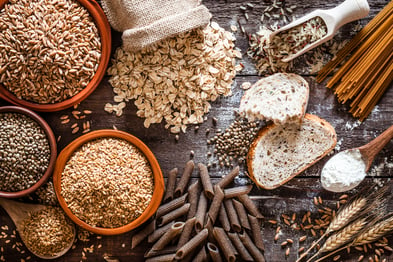.jpg?width=468&name=GettyImages-638573962%20(1).jpg) The holidays are always such busy times! Managing all the things from day to day tasks, much less the extra holiday parties, celebrations, decorating, shopping, etc. Many times people decide to skip workouts or cooking at home to make time for holiday activities. You shouldn't forgo your normal routine and it's best if you try to maintain some normalcy when it comes to your exercise routine and eating healthy. Take a moment to pause and incorporate even just 30 minutes of activity that includes the whole family.
The holidays are always such busy times! Managing all the things from day to day tasks, much less the extra holiday parties, celebrations, decorating, shopping, etc. Many times people decide to skip workouts or cooking at home to make time for holiday activities. You shouldn't forgo your normal routine and it's best if you try to maintain some normalcy when it comes to your exercise routine and eating healthy. Take a moment to pause and incorporate even just 30 minutes of activity that includes the whole family.
One way to manage your time between celebrating and exercising is to choose an activity with friends and family that involves exercise. There are a lot of festive activities that involve activity. Ice skating as a family is great exercise and can be done indoors or outdoors. During a snow fall, you can shovel and offer to help neighbors who may not be able to. Involve the whole family in building a snowman or snow fort to burn energy. One of the best snow activities is going sledding. Climbing those hills is not only a great leg workout, but also a cardiovascular workout.
Fortunately, there are a lot of indoor activity centers. If you belong to a gym or club, you can certainly use their facilities to do a traditional workout, play basketball or even swim as a family. Many area high school pools also offer open swim time. Trampoline parks have become a trend for family fun and instead of watching your kids jump, parents can join in on the fun. It’s quite the workout to jump for an hour, just use caution! Check out other options in your town such as laser tag, rock climbing, indoor batting cages and indoor playgrounds. Most of these involve a fee but if you plan ahead you can often get group discounts and coupons to make it affordable.
Don’t have time to plan ahead or need to save time? Create games and workouts at home. If you have stairs you can all walk or run up and down the stairs and do an activity at the top and bottom to create your own workout. Turn up the music for a family dance party and take turns choosing your favorite songs. The possibilities are endless, just think like a kid and use your imagination, or simply let your kids choose the activity!
Instead of grabbing food on the go, involve your kids and make it part of family time. Make your own pizzas at home and everyone can vote which is their favorite. Make a healthier Christmas cookie recipe together. There are great recipes that minimize processed sugars and flours. Allow your kids to pick the meal if they help make it. These are all ways that you can still spend family time together without disrupting your healthy eating.
The most important thing is to keep up as much of a routine as you can. If you are used to exercising and eating well then you should keep doing it as much as you can through the holidays. You can certainly take a break but don't disrupt your routine, make the holidays about friends and family, but you can also maintain your health as a priority.

 Whole grains have been advertised as being part of balanced diet for as long as I can
Whole grains have been advertised as being part of balanced diet for as long as I can 